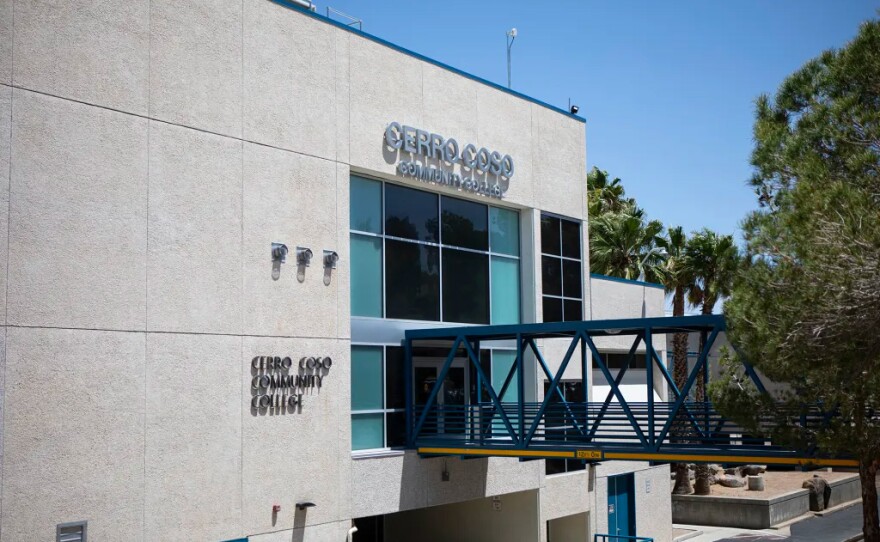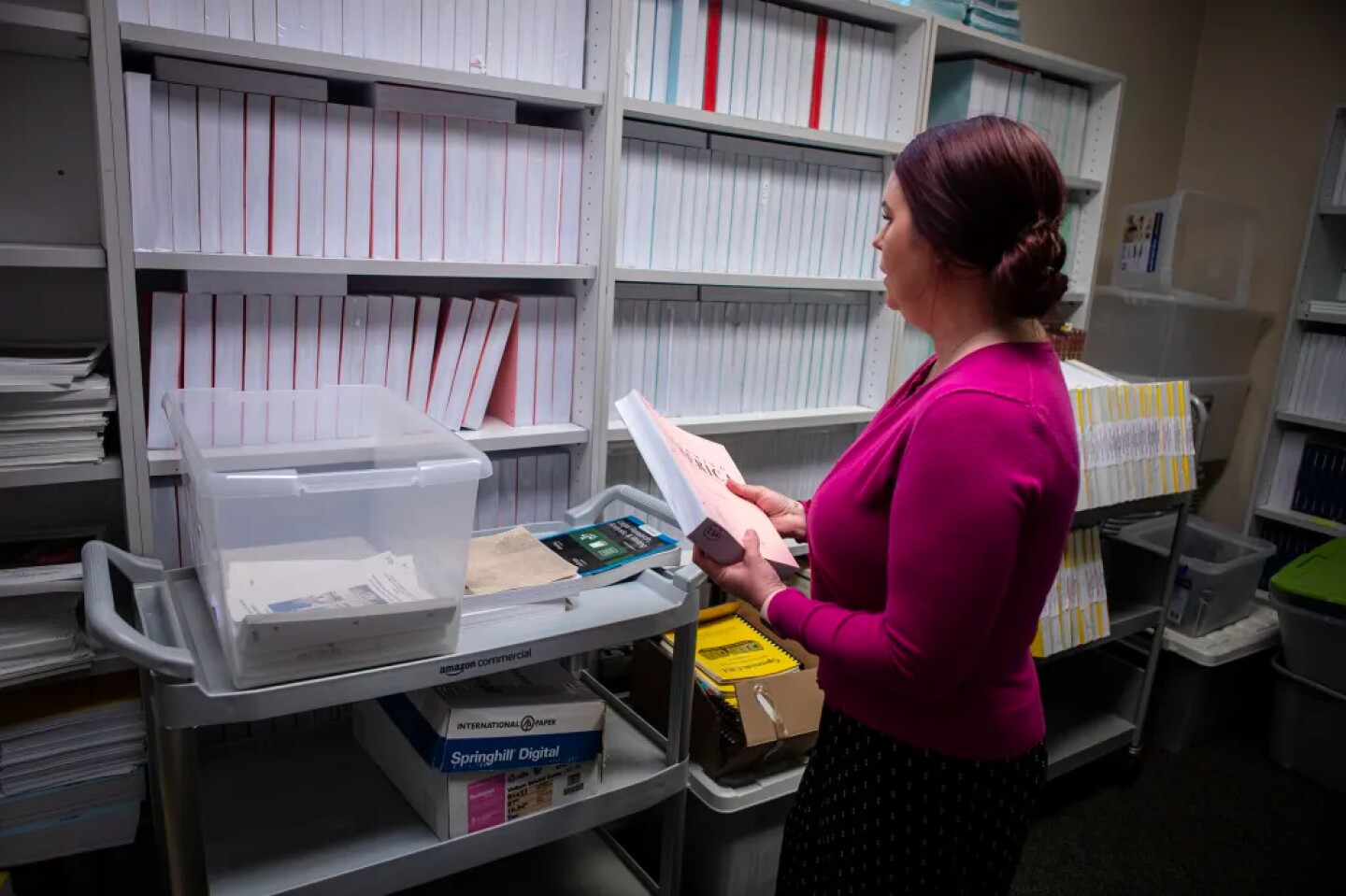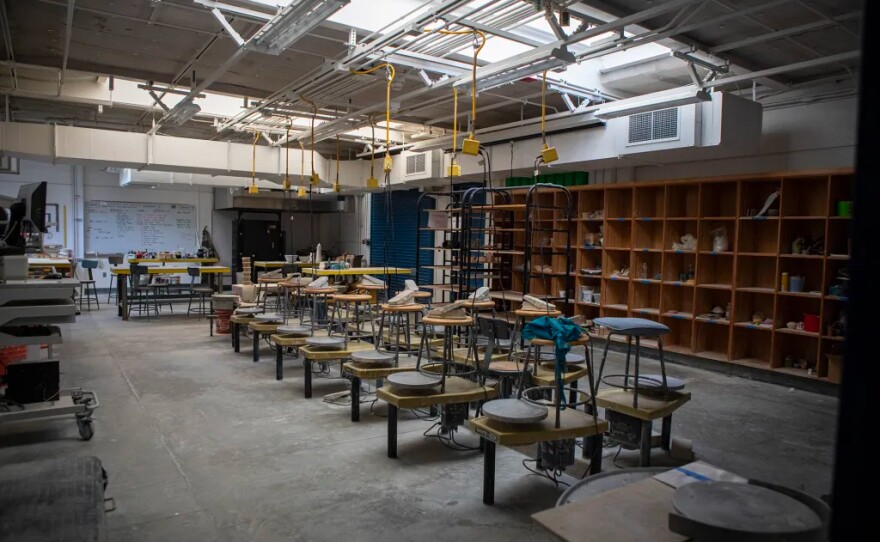As California closes three more prisons and downsizes six others, some prisoners aren’t ready to go. They are worried about the future of their education.
For more than 1,500 prisoners who attend college in these closing facilities, closures mean they could transfer to a new prison where the courses may not line up, leaving some students a few credits short of a degree. Education can offer tangible, real-world benefits to prisoners: They can earn degrees and gain merit credits that chip off time from a sentence. Research shows that prison education also reduces recidivism.
California’s shrinking prison population — the state had 160,000 prisoners in 2011, down to just 96,000 as of May 10 — has also created an unexpected problem for the state’s community college system, which has developed special programs to help prisoners earn degrees. Palo Verde Community College in Blythe, for example, draws almost half of its students from the nearby prison.
As the prisons close down, at least three community colleges stand to lose more than 10 percent of their student enrollment and millions of dollars in state funding, collectively.

Gov. Gavin Newsom has been interested in closing prisons since at least 2019. Since then, the state has closed one in Tracy and nearly finished closing another Susanville.
Last December, the California Department of Corrections and Rehabilitation said it would close a prison in Blythe and end the contract with a private prison company in California City. The corrections department also said it would close parts of six other prisons throughout the state.
In a statement to CalMatters, the corrections department said that it is committed to preventing “academic disruption” for students at the closing prisons and pointed to the work of the Rising Scholars Network at the California Community College Chancellor’s Office, which oversees various higher education programs across all of the state’s 34 adult prisons.
But local community college administrators say communication from the corrections department is limited and that they have few resources to help prisoners who fall through the cracks.
Learning in D Yard
Former prisoner David Zemp, a self-described nerd, gets wistful when he talks about prison education.
He spent seven years locked up in the D Yard at the California Correctional Institution in Tehachapi. By the time he was released in 2022, he said the prison unit looked more like a college campus than a prison.
Prisoners made their own salsa at the nearby garden and covered the white walls with murals: a dinosaur fossil, an astronaut, and at the entrance, the March of Progress in which a monkey evolves into man with a cap and gown.
“It was falling apart, but the people who were investing in it were in love with it,” he said. He earned five degrees while incarcerated, which ultimately knocked off roughly three years of his twelve-year prison sentence.


Before the start of the COVID-19 pandemic, Cerro Coso Community College taught over 35 in-person classes inside the D yard of the Tehachapi prison.
In addition to its murals that covered the walls and gardens outside, the college was also working with the prison to build portable classrooms on-site.
In December 2022, that all came to a halt. The college learned that the corrections department planned to close the D yard in Tehachapi this summer as well as the California City Correctional Center, another prison where Cerro Coso also teaches, by next year.
Dropping out in California prisons
Professors and administrators were in a bind. Almost 20 percent of Cerro Coso’s students were incarcerated at one of the two prisons. At the time, Anna Carlson, the program director for the college’s incarcerated education program, had little information about the timeline for the closures, except a promise from the California Department of Corrections and Rehabilitation that students would be able to stay throughout the spring semester.

“That just didn’t happen,” Carlson said. “Some were able to stay, and some were not.” Her office at Cerro Coso, a trailer that abuts the local school, is at the epicenter of the prison closures, fielding calls and sorting files from students and professors who are frantic or frustrated.
Throughout the spring, professors arrived at the prisons only to find that some of their students were gone.
Peter Fulks, a professor at Cerro Coso, spoke to over 100 people who are imprisoned and who told him continuing their education was consistently a top concern. Some men broke into tears because they were so worried about what might happen next, Fulks said.
Over 400 of Cerro Coso’s incarcerated students left prison before they could finish their semester. Of those students, 126 have been paroled; the rest are scattered across at least 27 different state prisons, according to data from Carlson’s department at Cerro Coso Community College.
Others dropped out of school even before they were transferred, said Fulks, resulting in an enrollment dip before the spring semester, right as news got out about the prison closures.
Bureaucratic coordination
The corrections department said in a statement that it is committed to preventing prison transfers during the semester, but that it does happen. The corrections department also said that the special credits awarded for classes — the ones which can give people who are imprisoned years off of their sentence — will transfer to the new prison, too.
Some students who leave in the middle of a semester strike special agreements with their teachers to finish the rest of the class via mail, but not every professor is willing or able to do that. Unlucky students must withdraw or take an incomplete.
In general, educational options for students vary depending on which prison they are sent to, according to the statement. Some prisons only offer classes via mail, known as “correspondence-based” courses; others have partnerships akin to Cerro Coso’s model and focus on in-person instruction.
The statement said it is up to the community colleges, with the state’s help “if needed,” to ensure the students’ credits transfer.
While the corrections department later clarified that it tracks where it moves each prisoner, administrators at two community colleges told CalMatters that they don’t have access to that information and said there’s no coordinated system among community colleges to communicate which students have transferred where.
Moreover, colleges need the written consent of the student before they can communicate with one another due to privacy laws.
Correspondence classes push on
Cerro Coso Community College is more vulnerable to the effects of prison closures because its classes are primarily in-person.
Statewide, most college classes in prison are by mail, where students communicate through letters with a community college professor they have never met.
That’s the case at both Palo Verde College on the Colorado River and Lassen College near Northern Nevada, which also face looming prison closures.
Palo Verde College expects to lose about 10 percent of its student body — about 520 people — when nearby Chuckawalla Valley State Prison closes in 2025, but President Don Wallace said the college can easily make up the lost enrollment by gaining correspondence-based students from other colleges around the state.
All told, nearly half of Palo Verde’s current students are incarcerated, a number that has more than doubled since 2016. The vast majority of those students are correspondence-based.
While the college will find other students, Wallace said the transfers will have a “horrific impact” on the current ones, who he worries may never finish their education. “It’s a stop-out point,” he said. “Even among people that are not incarcerated, when they have to change from one college to another or they move from a community college to a four-year university, those are points where people quit.”
Lassen College, whose nearby prison began closing last year, has been able to continue educating about three-quarters of its 200 students at their new prisons via correspondence, said Colleen Baker, interim dean of instruction. She did not respond to questions about the fate of the 50 of students who did not continue their education via correspondence.
To Fulks at Cerro Coso, who recently defended a dissertation about prison education, the difference in prison between in-person instruction and correspondence-based classes is stark. “Correspondence success rates are extremely low, about 68 percent compared to face-to-face, which was about 81.6 percent,” he said, adding that the performance for correspondence classes may be even lower since some of the remote classes he studied had professors stop by occasionally.
But for colleges, who receive state money based in part on the number of students they enroll, correspondence classes bring in a lot more revenue. “Each one of their students counts the same as a face to face. You don’t have to pay for location, materials for students, they limit how much support they provide to students and that money goes in,” he said.
Millions lost as degrees delay
Once the prison fully closes, Cerro Coso will lose just over 900 students, more than 10 percent of its total enrollment. The college’s vice president of finance, Chad Houck, said the college did not know how much funding would be lost. Palo Verde and Lassen College will each lose an estimated $1.7 million this academic year, according to an estimate by CalMatters using the state’s funding formula. While Lassen College was able to continue educating most of the prison’s students, it lost nearly 1,800 incarcerated students who were studying at the fire training center adjacent to the prison.

But unlike Lassen and Palo Verde colleges, Cerro Coso Community College will not offer any additional correspondence-based classes as a result of the prison closures, said Houck. He said the “quality is not the same” and that neither students nor faculty prefer it. Instead, the college will focus on recruiting more students from the local prison units that will remain.
As for the incarcerated Cerro Coso students who are leaving, they will need to connect with a new college at the prison where they go next.
Carlson has few options to help them and typically must wait for the prisoners to contact her office and request a transcript. As of May 11, roughly 60 students from the D Yard in Tehachapi and the California City prison have reached out to her team to request a transcript, and most people reached out before their transfer, at the moment they knew their destination.
Carlson and her colleagues predict those numbers will go up as more people settle into their next prison, but they also know some may never finish their degrees.
Adam Echelman covers California’s community colleges in partnership with Open Campus, a nonprofit newsroom focused on higher education.






